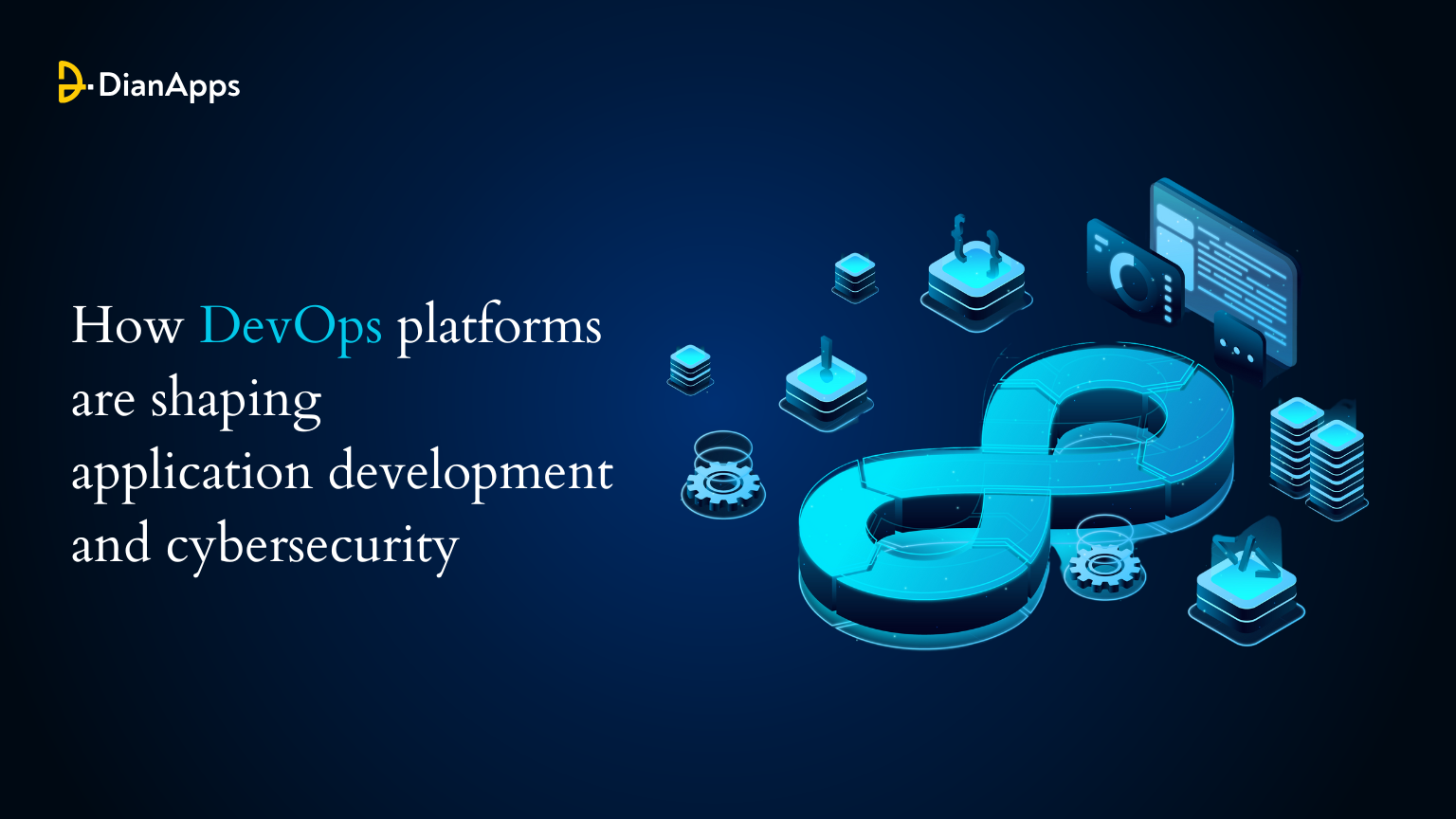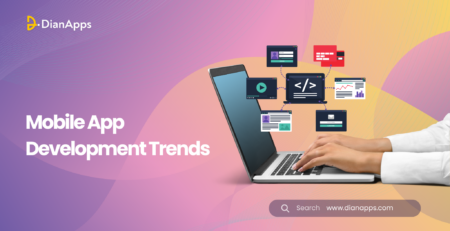How DevOps platforms are shaping application development and cybersecurity
What if you could accelerate your application development process while simultaneously strengthening its security? In today’s fast-paced digital world, this is no longer a dream but a reality, thanks to DevOps platforms.
DevOps has revolutionized the way software is developed, integrated, and delivered, with over 60% of organizations worldwide adopting DevOps practices to enhance their efficiency and reduce time-to-market.
But it’s not just about speed anymore. As cyber threats become more sophisticated and pervasive, security has emerged as a crucial element in the DevOps pipeline, leading to the rise of DevSecOps.
In fact, a study found that 91% of organizations report improved security outcomes by integrating security practices directly into their DevOps processes.
In this blog, we’ll explore how DevOps platforms are shaping not only the speed and quality of application development but also fortifying cybersecurity, ensuring that businesses can innovate without compromising security.
Let’s dive into how this synergy between development and security is transforming the way applications are built, deployed, and protected in the modern era.
Also read: The role of DevOps in the modern custom software development.
What is DevOps?
DevOps is a set of practices and cultural philosophies that aim to unify and automate the processes between software development (Dev) and IT operations (Ops).
It fosters a collaborative environment where development teams, operations teams, and other stakeholders work together seamlessly to create, test, and release software faster and more reliably.
At its core, DevOps promotes continuous integration (CI) and continuous delivery (CD), where development and operational activities are automated, streamlined, and integrated into a continuous pipeline.
This results in shorter development cycles, faster bug fixes, and more frequent product releases.
Historically, development and operations were siloed teams, each with distinct roles and responsibilities. However, with the rise of DevOps, these barriers have been broken down. Now, developers and operations professionals collaborate from the start of the project to the very end, ensuring that the final product is more efficient, scalable, and secure.
Key principles of DevOps include:
Automation:
Reducing manual tasks through the automation of testing, deployment, and monitoring processes.
Collaboration:
Breaking down silos and fostering collaboration between all teams involved in the development lifecycle.
Feedback loops:
Constant feedback from all stages of the development process to improve the product continuously.
Monitoring and Reporting:
Continuous monitoring to ensure systems perform optimally and issues are identified early.
DevOps is not just about tools; it’s about changing the way teams work and collaborate.
By aligning the goals of development and operations, DevOps creates a more unified, agile approach to custom software development services—one that’s adaptable to rapid changes and ever-evolving business needs.
This philosophy has reshaped the way companies approach both application development and, importantly, the cybersecurity that must accompany it.
Key Features of the DevOps Platform
DevOps platforms are designed to support and enhance the continuous flow of development and operational tasks, providing the tools and processes necessary for seamless collaboration, automation, and security integration.
Let’s explore the key features that make DevOps platforms a game-changer for modern software development:
1. Continuous Integration (CI) and Continuous Deployment (CD)
At the heart of every DevOps platform lies continuous integration and continuous deployment.
These practices allow development teams to automatically integrate and test code changes in real time, reducing the risk of integration issues.
As a result, developers can deploy code more frequently and with fewer errors.
CI/CD strategies ensures that code is constantly tested and validated, while continuous deployment ensures that new features or fixes are automatically pushed to production without manual intervention, making the development cycle faster and more reliable.
2. Automation
Automation is one of the most powerful features of DevOps. It eliminates manual intervention, reduces human error, and accelerates processes such as testing, integration, and deployment.
Through automation, repetitive tasks—like code testing, quality checks, and software updates—are handled by tools, freeing up teams to focus on higher-value work.
Automation also extends to monitoring, where DevOps platforms automatically track system performance, security, and potential vulnerabilities, ensuring that teams can react quickly to any issues.
3. Monitoring and Feedback Loops
DevOps platforms place a strong emphasis on real-time monitoring and continuous feedback.
Through continuous monitoring of both the development and operational environments, DevOps teams gain visibility into application performance, user experience, and security metrics.
This immediate feedback enables teams to identify problems early, whether it’s a bug in the code, a performance bottleneck, or a security threat.
The ability to address these issues instantly leads to higher-quality software and ensures that security vulnerabilities are mitigated before they can be exploited.
4. Infrastructure as Code (IaC)
Infrastructure as Code (IaC) is a key concept in DevOps that involves managing and provisioning computing infrastructure through machine-readable definition files, rather than physical hardware or interactive configuration tools.
This allows developers to automate the provisioning of servers, databases, and other components, enabling faster, more consistent environments.
IaC enables teams to replicate environments quickly and easily, ensuring that the development, testing, and production environments are identical.
This consistency across all environments reduces the chances of errors that arise from configuration drift and increases both development speed and security.
5. Collaboration Tools and Seamless Communication
Effective collaboration is crucial for the success of any DevOps implementation. DevOps platforms integrate communication tools that allow all stakeholders—developers, testers, operations teams, and even business teams—to work together seamlessly.
By providing a single platform where everyone can collaborate in real-time, DevOps platforms eliminate communication barriers that often lead to misaligned goals and project delays.
These platforms include version control systems, code repositories, chat tools, and dashboards that allow teams to track progress, discuss issues, and stay aligned with project goals.
How DevOps Transforms Application Development?
DevOps platforms have significantly transformed the way applications are developed, making the process faster, more efficient, and adaptable to change. Here’s how:
1. Accelerating Development Cycles
One of the most noticeable impacts of DevOps is the acceleration of development cycles.
Traditional development models often involve long, drawn-out processes with significant delays between each stage of the software lifecycle.
DevOps, on the other hand, emphasizes continuous integration and continuous delivery (CI/CD), which significantly shortens the time between writing code and deploying it to production.
With the automation of routine tasks such as code testing, integration, and deployment, developers can push updates more frequently, allowing businesses to respond quickly to customer needs and market changes.
This acceleration leads to faster innovation and shorter time-to-market for new features and products.
2. Improved Collaboration Between Development and Operations Teams
DevOps is built on the foundation of breaking down silos between teams.
Traditionally, developers and operations teams have worked separately, often leading to miscommunication, delays, and discrepancies between development and production environments.
With DevOps, both teams collaborate from the initial design phase to the final deployment, ensuring a smoother workflow and a more efficient development process.
By integrating both development and operational roles, teams can make more informed decisions, solve problems faster, and ensure that software is both performant and scalable in production.
The shared responsibility for both the application’s development and its operations fosters a culture of ownership and accountability.
3. Enhancing Code Quality and Reducing Errors
In a traditional development cycle, bugs and issues are often detected only during the testing phase, which can delay releases and lead to costly fixes.
With DevOps, continuous testing is integrated into the development pipeline, allowing for real-time identification of issues.
Automated testing tools run every time a new code change is pushed, ensuring that bugs are caught early in the development process.
Additionally, because developers continuously integrate their code into a shared repository, the risk of “integration hell”—where massive issues arise when code is finally merged—is reduced. This emphasis on testing throughout the development cycle leads to higher-quality code and more reliable applications.
4. Greater Adaptability to Market and Business Changes
The rapid pace of change in today’s business landscape demands that software applications be adaptable.
With DevOps, companies can quickly release updates to meet evolving market demands, customer feedback, or new business objectives.
By automating deployment and testing, DevOps allows teams to focus on innovation rather than maintenance.
Continuous delivery ensures that updates can be pushed quickly, whether it’s a small patch, a new feature, or an entire system overhaul.
The agility introduced by DevOps means that businesses can adapt to new opportunities, competition, and challenges without long delays or expensive overhauls.
5. Cost Efficiency
The automation and efficiency gained through DevOps practices translate directly into cost savings.
By streamlining the development and deployment process, businesses can reduce operational overhead and minimize the need for manual interventions.
The faster deployment cycles also mean that developers spend less time managing infrastructure or fixing bugs, allowing them to focus on innovation.
Moreover, because issues are identified earlier in the development cycle, there is less need for costly post-deployment fixes, which ultimately saves both time and money.
The Role of DevOps in Strengthening Cybersecurity
Data breaches, cyberattacks, and other security vulnerabilities are becoming more frequent and sophisticated.
In this environment, the integration of security into the DevOps pipeline, often referred to as DevSecOps, has become crucial.
DevOps platforms are no longer just tools for speeding up development; they are also essential for strengthening cybersecurity and ensuring that security practices are embedded throughout the software development lifecycle.
1. Proactive Security with DevSecOps
DevSecOps refers to the practice of integrating security at every stage of the DevOps process—from development through to operations.
Traditionally, security was treated as a separate entity, often added at the end of the development cycle.
This “security at the end” approach often led to costly delays and missed vulnerabilities.
With DevOps, security is shifted left, meaning it is integrated early in the development process.
This proactive approach ensures that vulnerabilities are identified and addressed in real-time, preventing security flaws from making it into production.
By embedding security into the development workflow, DevOps platforms help to create a more secure foundation for applications from the very beginning.
2. Automation of Security Practices in the CI/CD Pipeline
One of the key benefits of DevOps is automation, and this extends to security as well. Automated security testing, vulnerability scanning, and compliance checks are now an integral part of the CI/CD pipeline.
DevOps platforms can run automated security scans every time a new code change is pushed to the repository, identifying issues such as insecure coding practices, outdated libraries, or misconfigurations.
These scans ensure that security risks are caught early, rather than after the application is deployed.
Automated remediation tools can also be implemented, enabling teams to fix security issues immediately, further reducing risk.
3. Real-Time Vulnerability Scanning and Risk Management
Security is not a one-time check; it is an ongoing process.
DevOps platforms enable continuous vulnerability scanning, which means that security risks can be detected in real time and managed dynamically.
Whether it’s vulnerabilities in the code, misconfigurations in the infrastructure, or potential threats from third-party libraries, DevOps platforms provide the tools necessary to monitor and mitigate risks as they emerge.
Real-time scanning ensures that teams can react quickly to new vulnerabilities and threats, minimizing the time attackers have to exploit them.
The continuous monitoring of applications and infrastructure also provides valuable insights into the security posture of the system, allowing teams to prioritize fixes based on the severity of potential risks.
4. Continuous Monitoring for Early Threat Detection
DevOps platforms promote a culture of continuous monitoring, which plays a critical role in identifying security incidents as early as possible.
By tracking everything from system performance to network traffic, these platforms allow teams to spot potential threats before they escalate into full-blown security breaches.
Continuous monitoring is essential for detecting anomalous behavior, such as unauthorized access attempts, unusual traffic patterns, or signs of an internal attack.
Integrating security monitoring with performance monitoring means that teams can address both security and operational issues simultaneously, ensuring that applications are both secure and performant.
5. Enabling Secure Collaboration
DevOps platforms foster collaboration across development, operations, and security teams. Security is no longer the sole responsibility of a dedicated security team; rather, it is everyone’s responsibility.
Through shared responsibility and transparent workflows, all teams are empowered to make security a priority.
Security tools integrated into DevOps platforms provide visibility to all stakeholders, ensuring that security concerns are addressed at each stage of the development process.
By fostering a culture of secure collaboration, DevOps platforms ensure that security is prioritized without hindering the development process.
Incorporating security into every stage of the software development lifecycle is no longer optional—it’s essential.
DevOps platforms, with their automation, continuous monitoring, and proactive security practices, are reshaping how organizations approach cybersecurity.
By integrating security into the development pipeline through DevSecOps, companies can not only accelerate their application development but also ensure their software remains resilient against the growing number of cyber threats.
This dual focus on speed and security enables businesses to innovate while safeguarding their assets, ultimately making DevOps an indispensable part of modern software development.
The Future of DevOps: Innovations in Application Development and Cybersecurity
As the demands of both businesses and end users evolve, so too must the tools and practices that support application development and cybersecurity.
DevOps is no longer a niche approach, but a foundational element of modern software development.
Looking ahead, several emerging trends and innovations within the DevOps ecosystem are poised to drive even greater efficiencies, security, and innovation in application development and cybersecurity.
1. Artificial Intelligence and Machine Learning in DevOps
Artificial Intelligence (AI) and Machine Learning (ML) are set to revolutionize DevOps platforms by enhancing automation, predictive analytics, and decision-making processes.
AI can analyze vast amounts of data generated during the development and deployment cycles to identify patterns, detect anomalies, and predict potential issues before they occur.
For example, AI can be used to automatically identify vulnerabilities in the code, recommend fixes, and even predict the impact of changes on application performance.
Machine learning models can also improve monitoring by continuously learning from past data and refining how they detect threats or performance issues, making DevOps more intelligent and adaptive.
AI-driven tools in DevOps platforms will allow teams to respond proactively, reducing response times to issues and mitigating risks faster.
The combination of AI and DevOps will likely lead to more autonomous systems that require less manual intervention while offering greater accuracy in identifying and resolving issues.
2. Cloud-Native DevOps
As organizations continue to embrace cloud computing, cloud-native DevOps is becoming increasingly important.
Cloud-native platforms enable the development, deployment, and scaling of applications in a cloud environment, allowing teams to take full advantage of the elasticity, scalability, and cost-effectiveness of cloud infrastructure.
Cloud-native DevOps makes it easier to manage complex microservices architectures and containerized applications.
By integrating DevOps practices with cloud-native technologies such as Kubernetes and Docker, development teams can automate the deployment and management of applications across multiple cloud environments.
While cloud-native tooling accelerates delivery, teams should continuously evaluate the security posture of their clusters. A targeted Kubernetes risk assessment can quickly connect to your environment, scan for misconfigurations, excessive permissions, and exposure paths across namespaces and workloads. Feeding these insights into CI/CD and IaC pipelines helps DevSecOps teams close gaps fast without slowing releases.
This shift is driving more resilient and scalable systems that can better withstand changes in demand and enhance business continuity.
The future of DevOps is closely tied to cloud-native practices, as they offer greater flexibility and the ability to deliver applications faster and more securely.
With cloud-native DevOps, businesses can innovate faster while ensuring that their applications are robust and secure in the cloud.
3. DevOps for Edge Computing
Edge computing is emerging as a key enabler of next-generation applications, particularly for industries like IoT, autonomous vehicles, and real-time analytics.
As more devices and sensors are connected to the network, DevOps platforms will need to adapt to support the deployment and management of applications at the edge.
DevOps for edge computing will involve creating streamlined processes for the development and deployment of software that runs on decentralized devices, often in remote locations.
With edge DevOps, development teams can push updates and patches to edge devices quickly, ensuring that the applications running on these devices are secure, reliable, and performing optimally.
This evolution will be crucial as more businesses look to harness the power of real-time data and distributed computing.
DevOps for the edge will allow organizations to build more scalable and responsive applications that can operate independently of centralized cloud systems, reducing latency and improving performance.
4. Zero Trust Security Model
The traditional perimeter-based security model, where everything inside the network is trusted, is becoming obsolete as businesses adopt more cloud-based and hybrid infrastructures.
In its place, the Zero Trust security model is gaining traction, which operates on the assumption that no entity—inside or outside the network—should be trusted by default.
Incorporating a Zero Trust framework into DevOps practices ensures that every action, request, and interaction is continuously verified, regardless of its source.
This means that DevOps platforms must include robust access controls, identity verification, and continuous monitoring as part of their security practices.
Zero Trust security is particularly important in a world where applications are being developed and deployed across multiple environments, including the cloud and edge devices.
By embedding Zero Trust principles into the DevOps pipeline, organizations can significantly reduce their exposure to cyber threats and limit the impact of security breaches.
5. Continuous Compliance and Regulatory Automation
As privacy laws and industry regulations continue to evolve, organizations must ensure their applications are not only secure but also compliant with these ever-changing standards.
Continuous compliance, a concept that aligns with continuous integration and continuous delivery, integrates regulatory checks directly into the DevOps pipeline.
With the help of DevOps platforms, teams can automate compliance checks, such as data encryption standards, auditing processes, and privacy regulations, ensuring that every deployment adheres to the required legal and industry standards.
Continuous compliance ensures that organizations can build software faster without compromising on regulatory obligations, reducing the risk of fines and reputation damage.
6. Quantum Computing Integration
Though still in the early stages, quantum computing holds the potential to radically change the way DevOps operates, particularly when it comes to processing complex algorithms, enhancing encryption, and optimizing software development workflows.
As quantum computing continues to mature, DevOps platforms will likely integrate quantum-powered tools for tasks such as cryptography, load balancing, and even AI model optimization.
This will open new possibilities for secure, high-performance applications, providing businesses with a powerful advantage in an increasingly competitive landscape.
Embracing DevOps for Secure and Agile Future-Ready Applications
As we look towards the future of application development and cybersecurity, it’s clear that DevOps platforms are more than just a passing trend—they are the backbone of modern software development.
From integrating security into every phase with DevSecOps to leveraging emerging technologies like AI, machine learning, and quantum computing, DevOps is enabling businesses to build faster, more secure, and resilient applications.
Whether it’s through cloud-native adoption, edge computing, or continuous compliance, DevOps practices are reshaping the way we approach both application development and cybersecurity.
At DianApps, we understand the importance of combining speed with security.
Our expertise in DevOps practices, integrated with cutting-edge technology, allows us to deliver top-tier mobile app development services, custom software solutions, and secure applications that meet the highest standards of performance.
If you’re looking to future-proof your applications with efficient DevOps practices while ensuring your business stays ahead in security and innovation, DianApps a leading DevOps Consulting Company is here to help.
Contact us today to explore how we can assist you in embracing the full potential of DevOps and taking your application development journey to new heights.




